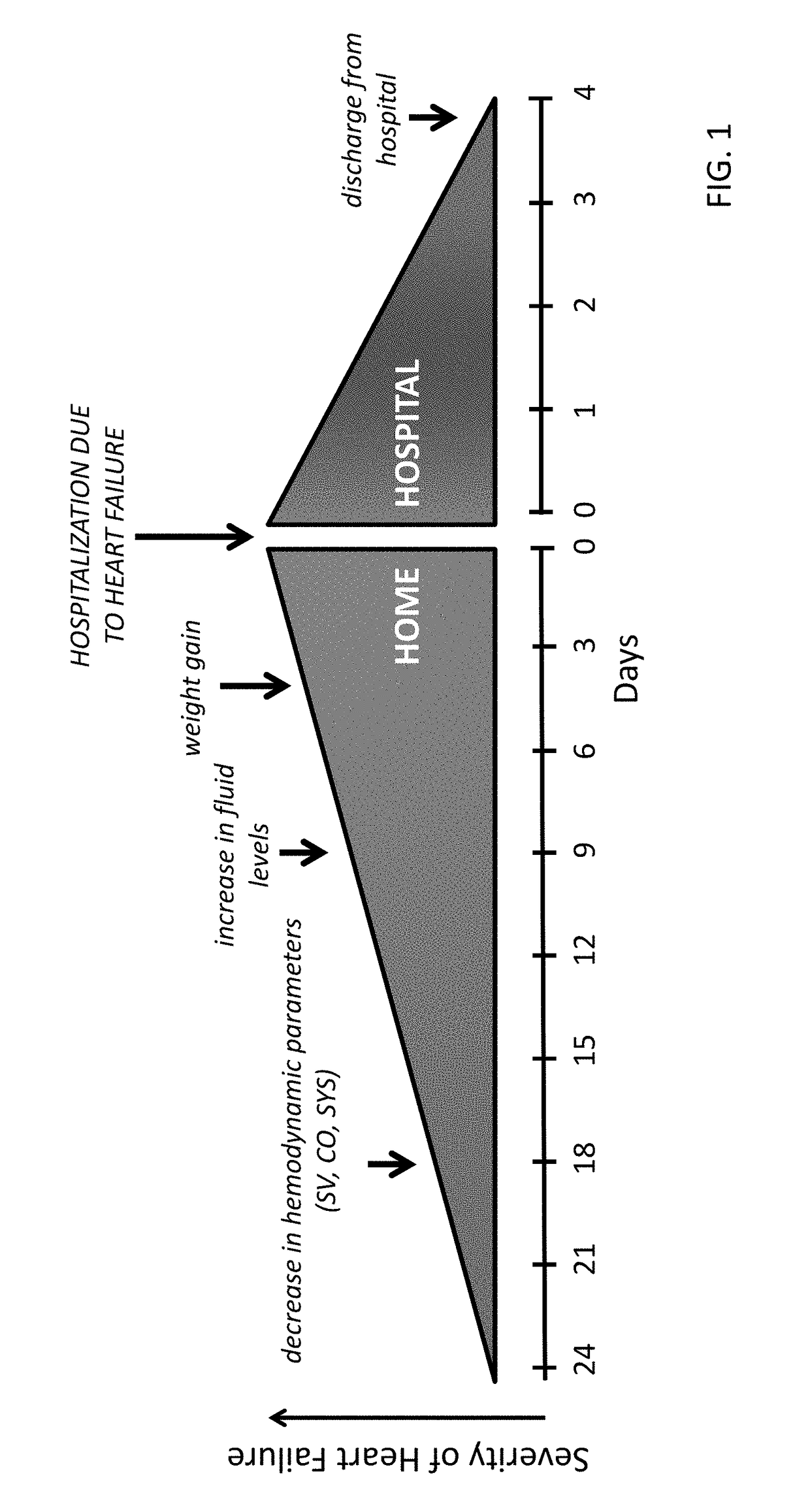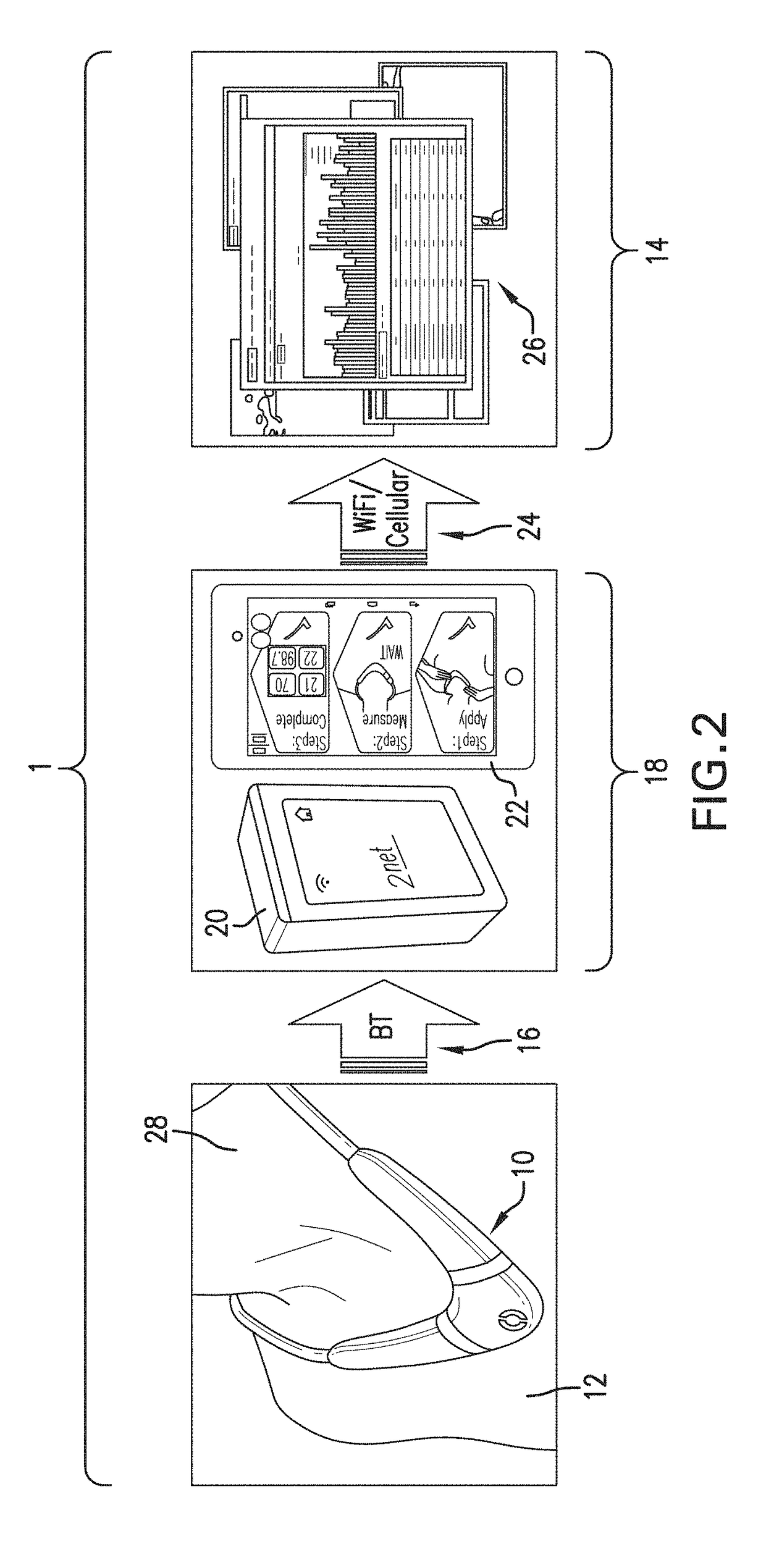Neck-worn physiological monitor
a physiological monitor and neck-worn technology, applied in the field of sensors, can solve the problems of nullifying the value, affecting treatment, and measurement errors, and achieve the effects of improving the repeatability and reproducibility of the measurement, improving patient compliance, and facilitating monitoring a patien
- Summary
- Abstract
- Description
- Claims
- Application Information
AI Technical Summary
Benefits of technology
Problems solved by technology
Method used
Image
Examples
embodiment 1
[0145]2. The sensor of embodiment 1, wherein the blood pressure-monitoring system is configured to measure SYS from a pulse transit time (PTT), with the first algorithm configured to: 1) process the digital ECG waveform to determine a first time point; 2) process the digital impedance waveform to determine a second time point; 3) analyze the first and second time points to determine PTT; and 4) analyze the PTT to determine a value of SYS.
[0146]3. The sensor of embodiment 1 or 2, wherein the second algorithm is configured to process the digital impedance waveform to extract an amplitude of a derivatized value of the impedance waveform's AC component, an amplitude of the impedance waveform's DC component, and an estimated injection time to determine SV.
[0147]4. The sensor of one of embodiments 1-3, wherein the third algorithm is configured to process an amplitude of a DC component of the digital impedance waveform to determine the value of TFI.
[0148]5. The sensor of one of embodiments...
embodiment 6
[0150]7. The sensor of embodiment 6, wherein each of the one or more flexible connectors comprises a flexible circuit.
embodiment 7
[0151]8. The sensor of embodiment 7, wherein the ECG circuit and the digital processing circuit are located on separate rigid circuit boards located in separate housing segments.
[0152]9. The sensor of embodiment 7, wherein the impedance circuit and the digital processing circuit are located on separate rigid circuit boards located in separate housing segments.
[0153]10. The sensor of embodiment 7, wherein the housing comprises three rigid housing segments, with the ECG circuit, the impedance circuit, and the digital processing system each being located in one of the three housing segments.
PUM
 Login to View More
Login to View More Abstract
Description
Claims
Application Information
 Login to View More
Login to View More - R&D
- Intellectual Property
- Life Sciences
- Materials
- Tech Scout
- Unparalleled Data Quality
- Higher Quality Content
- 60% Fewer Hallucinations
Browse by: Latest US Patents, China's latest patents, Technical Efficacy Thesaurus, Application Domain, Technology Topic, Popular Technical Reports.
© 2025 PatSnap. All rights reserved.Legal|Privacy policy|Modern Slavery Act Transparency Statement|Sitemap|About US| Contact US: help@patsnap.com



